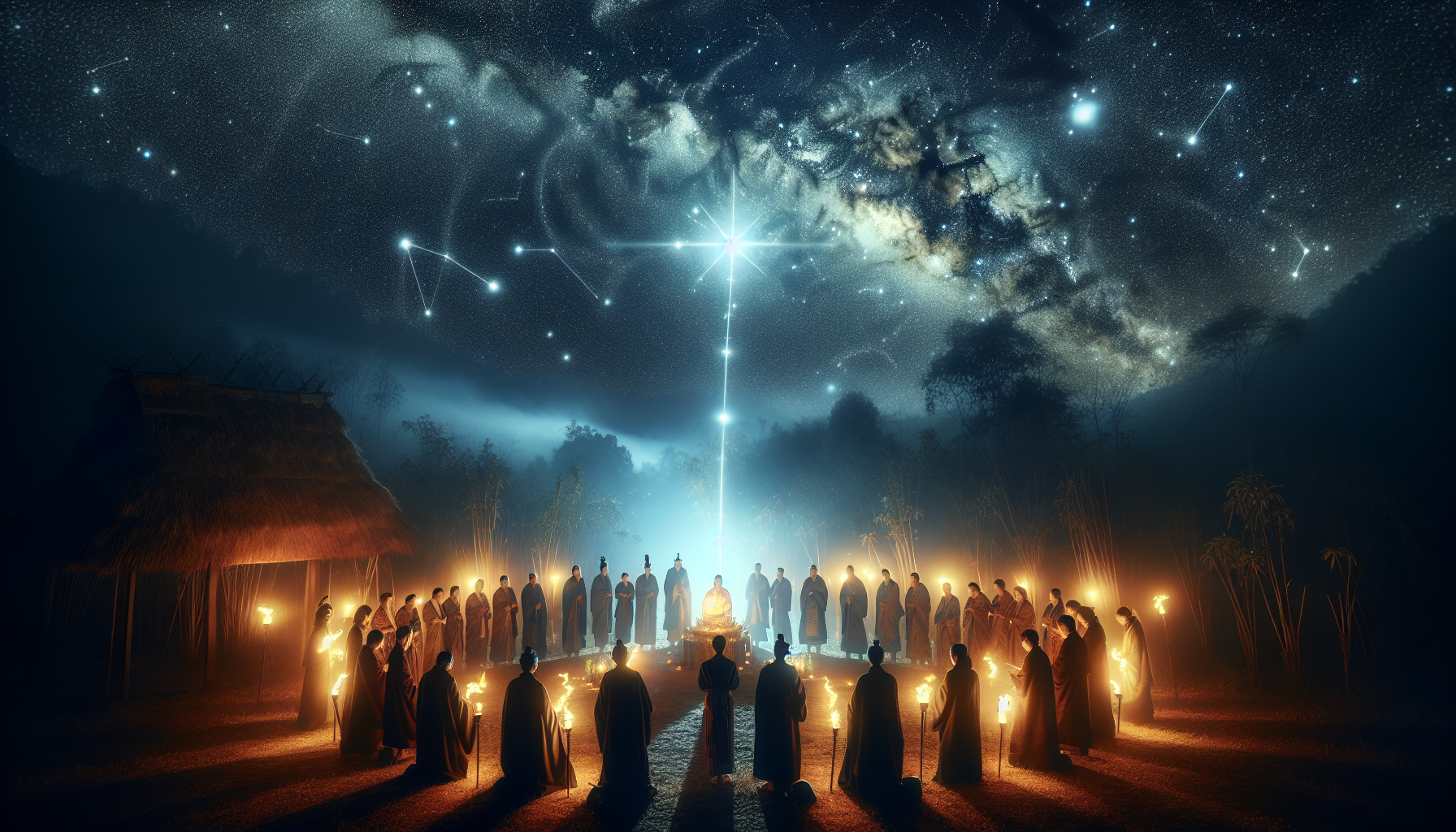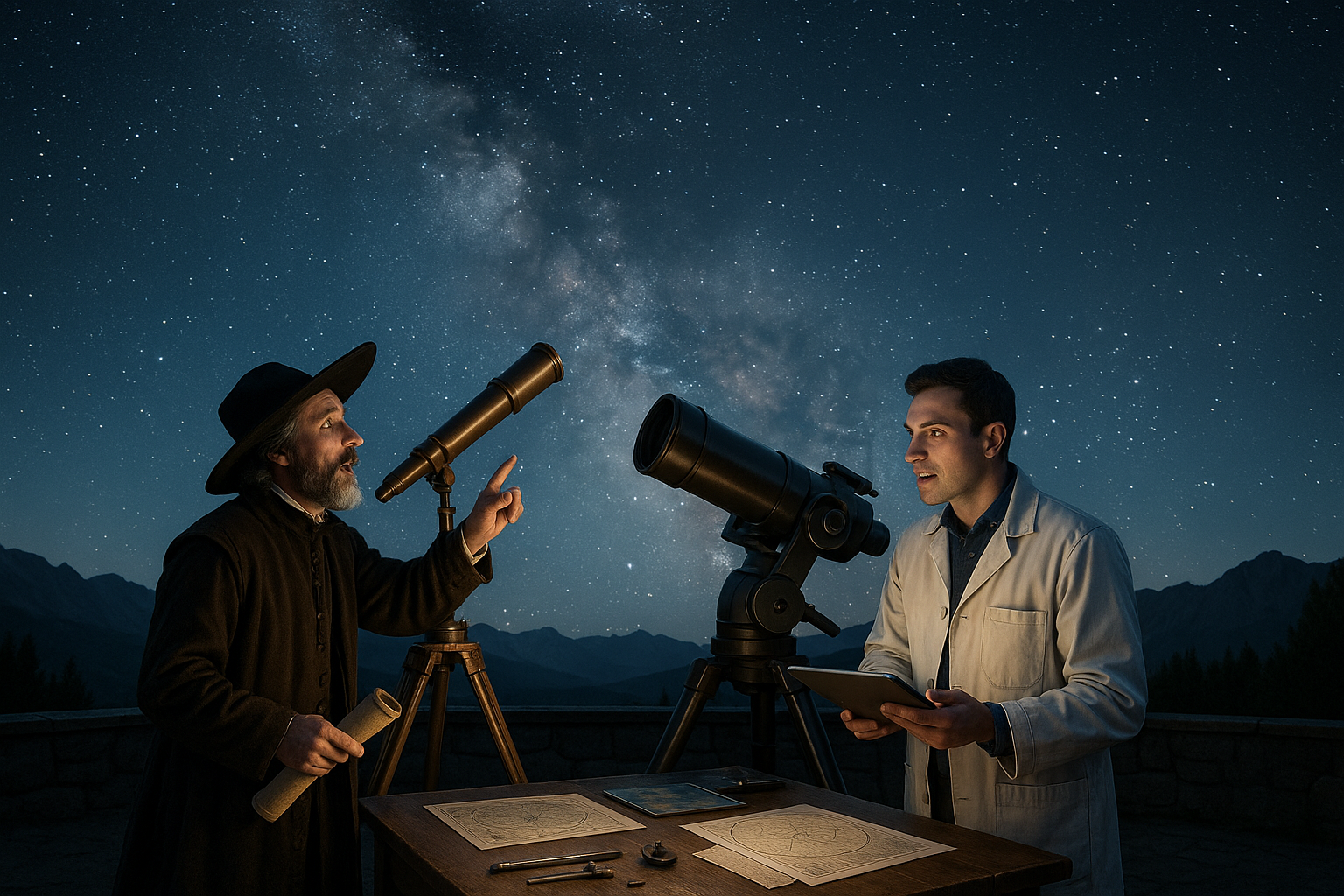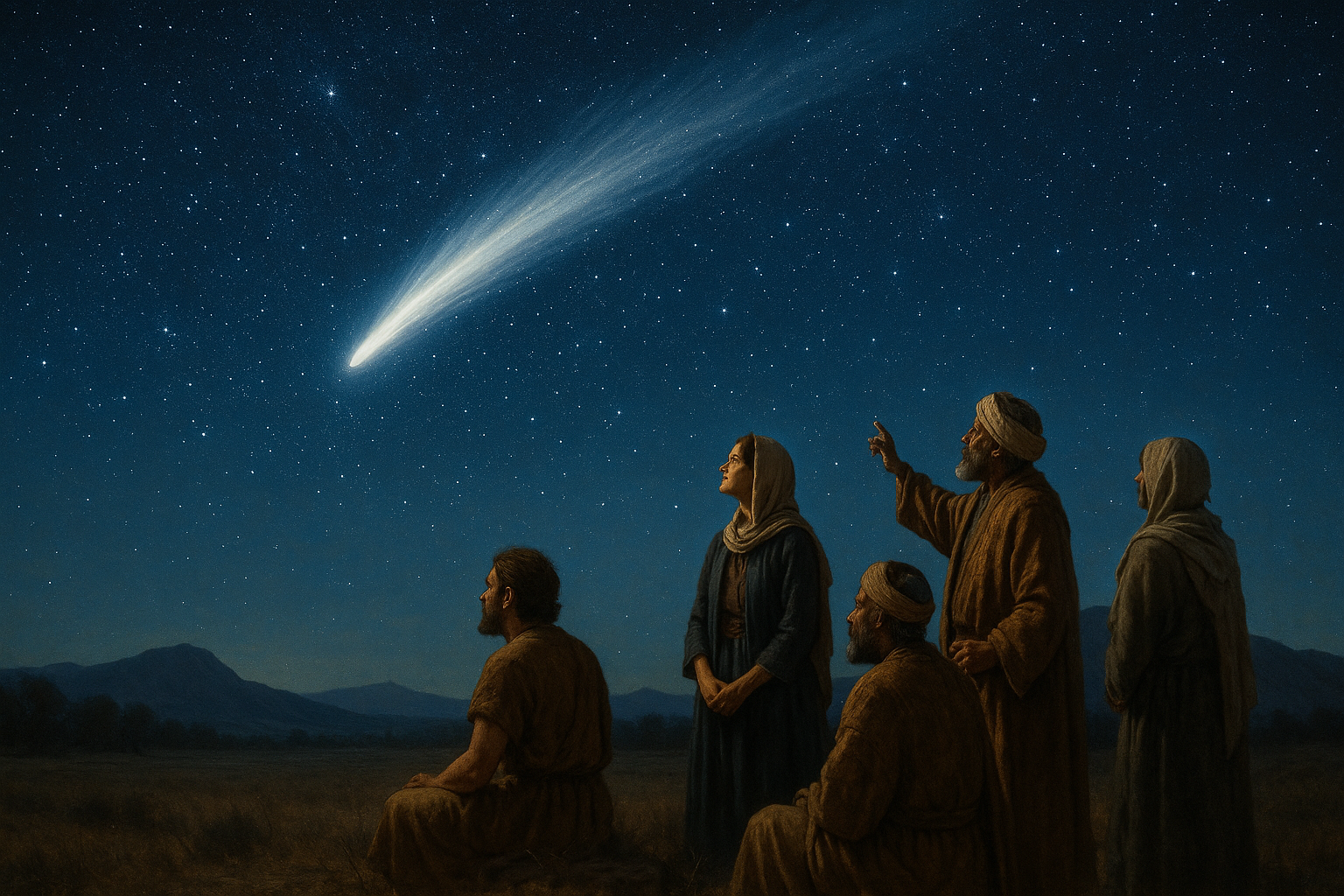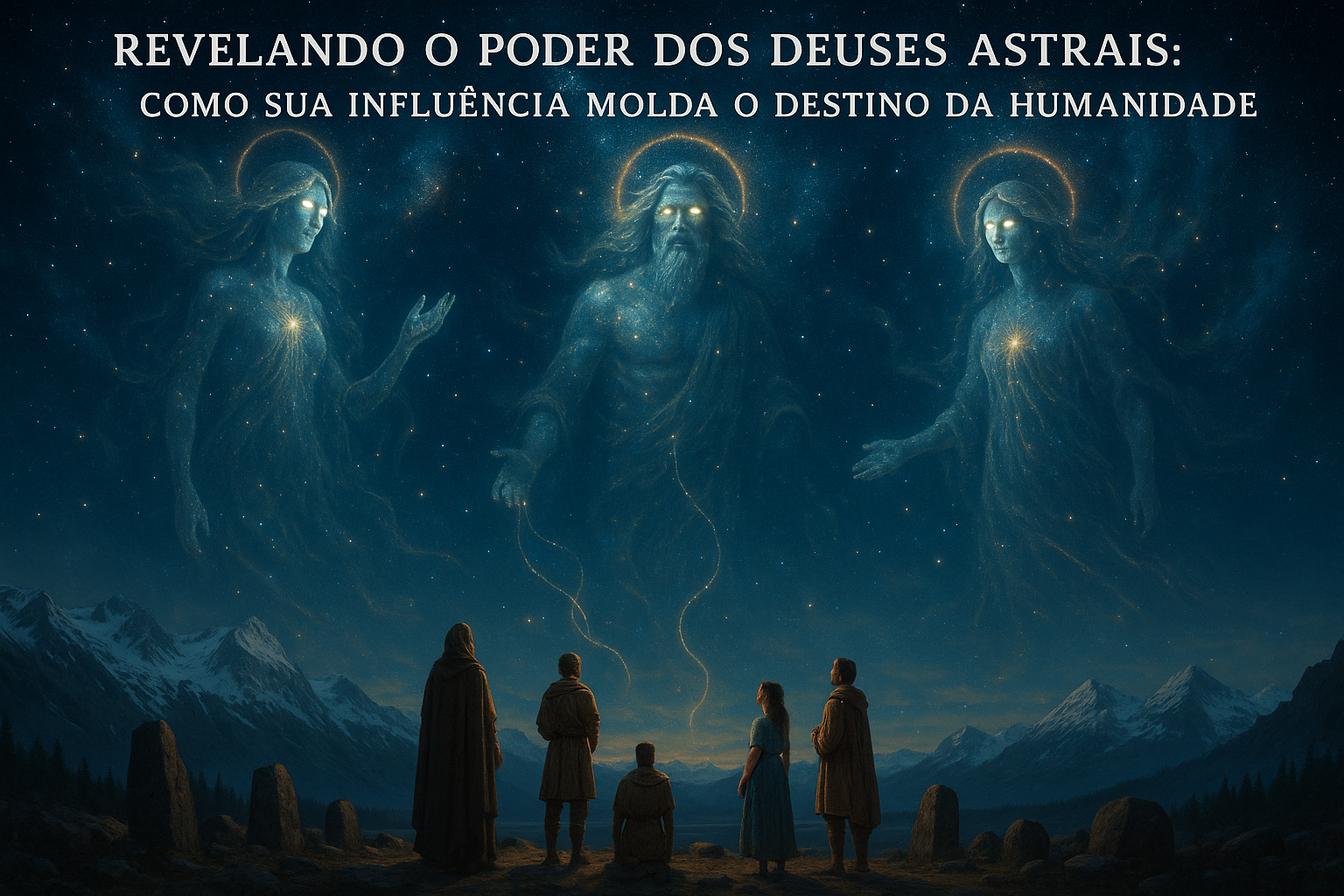In a world where the mundane often overshadows the mystical, the night sky stands as a timeless canvas painted with the shimmering echoes of the universe. For millennia, humans have gazed upward, not just in search of answers, but in pursuit of a deeper connection to the cosmos. It is here, amidst the stars and celestial wonders, that many ancient cultures found profound inspiration, shaping the very fabric of their spiritual and religious practices. Welcome to “Guided by the Stars: Exploring the Sacred Connection Between Religious Ceremonies and Celestial Bodies,” where we embark on a journey through time and space to uncover the enchanting bond between humanity’s faith and the heavens above. 🌌
Imagine standing amidst the towering pyramids of Giza as the sun sets on the horizon, casting long shadows that speak of mysteries as old as time. These architectural marvels are not merely tombs but are intricately aligned with celestial bodies, serving as conduits between the earthly and the divine. This relationship between sacred structures and the stars is not unique to ancient Egypt; it resonates across cultures and epochs, from the Stonehenge in England, which marks the solstices, to the Chaco Canyon in New Mexico, where ancestral Puebloans tracked lunar cycles. Each of these sites whispers secrets of civilizations that looked skyward for guidance, timing their ceremonies and rituals to the movements of planets and stars, forging a sacred symbiosis between earthbound worship and the celestial dance above.
At the heart of this celestial connection lies a quest for meaning, for understanding one’s place in the universe. The stars have long served as a celestial map, guiding not only physical journeys but spiritual ones as well. Ancient priests and shamans, regarded as the first astronomers, meticulously observed the heavens, recording lunar phases, solar eclipses, and planetary alignments. These cosmic events were imbued with spiritual significance, often seen as messages from the divine or harbingers of change. The interplay between astronomy and spirituality sparked a tradition of celestial prophecy, where the positions of the stars and planets were interpreted as divine will, influencing the timing and nature of religious ceremonies across cultures.
As we delve deeper into the narratives of the stars and their spiritual significance, we will explore the intricate tapestry woven by astrology, mythology, and religion. Astrology, often dismissed as mere superstition, has deep roots in ancient cultures, where celestial bodies were believed to exert influence over human affairs and natural phenomena. This belief system, intertwined with mythology, gave rise to gods and goddesses personifying celestial bodies, such as the Greek Artemis, goddess of the moon, and the Roman Jupiter, king of the gods and ruler of the skies. These deities not only inspired awe but also served as intermediaries between the mortal and divine realms, with their celestial movements dictating the rhythm of religious festivals and rites.
In this exploration, we will journey through diverse religious landscapes, from the Vedic rituals of India that honor the sun and moon, to the Islamic calendar, which orients religious observances around the lunar cycle. We will examine the enduring legacy of these celestial connections in contemporary practices and the resurgence of interest in astrological insights in modern spirituality. Whether through the lens of history, mythology, or personal belief, our fascination with the stars remains a testament to the timeless human desire to seek connection, meaning, and transcendence. So, dear reader, prepare to embark on this cosmic voyage, as we uncover the sacred bond between our rituals and the stars that guide them, illuminating not only the skies above but the spiritual paths within. ✨
The Cosmic Dance: How Celestial Bodies Influence Religious Ceremonies
Throughout history, humanity has gazed at the stars, finding patterns and meanings that have woven themselves into the very fabric of religious and cultural practices. The night sky, with its myriad of celestial bodies, serves as a cosmic backdrop to the sacred rituals and ceremonies performed by various civilizations. The alignment of stars, the phases of the moon, and the path of the sun have long been perceived as divine markers guiding spiritual events and celebrations.
Religious ceremonies across different cultures have often been synchronized with celestial events. The ancients believed that the heavens were a reflection of the divine, a notion that is evident in the intricate connections between celestial phenomena and religious observances. From the construction of sacred sites aligned with the solstices to the timing of festivals based on lunar cycles, the influence of the cosmos is omnipresent.
The relationship between celestial bodies and religious practices is not merely symbolic; it is deeply rooted in the practical aspects of life. Agricultural cycles, which were crucial for survival, were governed by the movement of the sun and the moon. The timing of planting and harvesting was often dictated by the stars, ensuring a bountiful yield. This practical necessity naturally evolved into a sacred connection, where the heavens were seen as divine guides in human affairs.
Star Alignments and Sacred Architecture
Many ancient civilizations constructed their sacred sites with precise astronomical alignments, demonstrating a profound understanding of celestial mechanics. These structures were not only places of worship but also celestial observatories, serving as bridges between the earthly and the divine.
The Great Pyramid of Giza, for example, is aligned with the cardinal points and the stars of Orion’s Belt, which were associated with the god Osiris. This alignment was believed to facilitate the pharaoh’s journey to the afterlife, emphasizing the sacred relationship between architecture and the cosmos. Similarly, Stonehenge is thought to have been designed to mark the solstices, allowing ancient peoples to track the sun’s path throughout the year.
The temples of Angkor Wat in Cambodia are another testament to the interplay between celestial bodies and religious architecture. The complex is oriented in a way that it aligns with the solstices and equinoxes, reflecting the Khmer’s sophisticated understanding of astronomy. These alignments underscore the importance of celestial events in the spiritual lives of ancient peoples.
The Lunar Influence on Religious Festivals
The lunar cycle has played a significant role in determining the timing of religious festivals across cultures. The phases of the moon, with their regularity and predictability, provided a natural calendar for marking sacred events. This lunar influence is evident in a variety of religious traditions, from the Jewish calendar to Islamic rituals.
In Judaism, the Hebrew calendar is a lunisolar calendar, where months begin with the new moon. Festivals such as Passover and Sukkot are determined by this lunar system, ensuring that these celebrations are in sync with the moon’s phases. Similarly, the Islamic calendar is based purely on the lunar cycle, with Ramadan, the month of fasting, starting with the sighting of the new moon.
The lunar calendar’s significance is not limited to these traditions. In Hinduism, many festivals, such as Diwali and Holi, are also aligned with the lunar cycle. These festivals are rich with symbolism and are often associated with mythological stories that emphasize the cosmic order and its influence on human affairs.
Solar Celebrations: The Role of the Sun in Religious Observances
The sun, as a symbol of life and energy, has been central to many religious observances throughout history. Its path across the sky and its changes in position during the year have been carefully observed and celebrated in various cultures. The solstices and equinoxes, in particular, hold significant religious and cultural importance.
In ancient Egypt, the sun god Ra was the central figure in the pantheon, and the daily journey of the sun across the sky was seen as a reflection of Ra’s voyage. The winter solstice, marking the rebirth of the sun, was a time of celebration and renewal. Similarly, the Inca civilization celebrated Inti Raymi, the Festival of the Sun, during the winter solstice in the Southern Hemisphere, honoring the sun god Inti and praying for a good harvest.
In more recent times, Christmas has been linked to the winter solstice, symbolizing the return of light in the darkest time of the year. Although it is primarily a Christian festival, its timing and many associated customs have roots in ancient solstice celebrations, demonstrating the enduring influence of the sun on religious observances.
A Table of Celestial Influences in Various Religions
To better understand the diverse ways in which celestial bodies have shaped religious practices, consider the following table:
| Religion | Celestial Body | Religious Significance |
|---|---|---|
| Ancient Egyptian | Sun (Ra) | Central to daily rituals; solstices marked as times of rebirth and renewal. |
| Judaism | Moon | Lunar calendar determines religious festivals; new moons mark the start of months. |
| Hinduism | Moon | Lunar phases guide festivals like Diwali; symbolically represents cosmic cycles. |
| Inca | Sun (Inti) | Inti Raymi celebrated during winter solstice; sun as a life-giving deity. |
| Christianity | Sun | Christmas linked to winter solstice; symbolizes the birth of light. |
These examples illustrate the profound and varied impact that celestial phenomena have had on religious traditions. Each culture has interpreted and incorporated these cosmic elements in unique ways, reflecting their understanding of the universe and its connection to the divine.
The Spiritual Significance of Eclipses in Religious Contexts
Eclipses, both solar and lunar, have long been viewed with awe and reverence, often interpreted as powerful omens or divine interventions. Their dramatic nature, where the sun or moon is temporarily obscured, has inspired myths and legends across the world.
In many ancient cultures, eclipses were seen as battles between gods or as cosmic events requiring human intervention. For instance, the ancient Chinese believed that solar eclipses were caused by a dragon devouring the sun. To ward off this celestial dragon, people would bang drums and make loud noises to scare it away.
In Hindu mythology, eclipses are linked to the demon Rahu, who is said to swallow the sun or moon, causing an eclipse. This mythological explanation reflects the symbolic struggle between light and darkness, with religious rituals often performed during eclipses to restore cosmic balance.
For many indigenous cultures, eclipses were times of reflection and renewal. The temporary darkening of the sky served as a reminder of the cycles of life and the ever-changing nature of the universe. Ceremonies conducted during eclipses often emphasized themes of transformation and rebirth.
Modern Interpretations and Practices
In contemporary spiritual practices, eclipses continue to hold significance, often viewed as opportunities for personal growth and transformation. Many modern spiritual communities use eclipses as occasions for meditation, introspection, and ritual work.
Some astrologers interpret eclipses as times of heightened energy and change, offering insights into one’s life path and purpose. These interpretations, while not rooted in scientific understanding, reflect a continued fascination with the celestial dance and its perceived influence on human affairs.
Whether through ancient myths or modern interpretations, eclipses remain powerful symbols in the human quest for meaning, highlighting the enduring connection between the cosmos and spiritual practice.
Watch an Insightful Video on Celestial Influences
To further explore the fascinating connection between celestial bodies and religious ceremonies, check out this informative video titled “The Cosmic Dance: How Celestial Events Shape Religious Rituals” available on [YouTube Channel Name]. Watch it to gain a deeper understanding of how the stars continue to guide and inspire spiritual practices around the world.

Conclusion
As we draw our exploration of the sacred connection between religious ceremonies and celestial bodies to a close, it’s imperative to reflect on the profound insights we’ve uncovered. Throughout this journey, we’ve traversed various cultures and epochs, witnessing how celestial phenomena have intricately woven themselves into the fabric of religious and spiritual practices. From the awe-inspiring pyramids of ancient Egypt to the meticulously aligned structures of Stonehenge, humanity has long been guided by the stars, seeking meaning and connection with the cosmos.
The key points of our exploration reveal the universality and timelessness of this celestial connection. First, we observed how ancient civilizations used celestial bodies not just as markers of time, but as divine entities influencing earthly affairs. This celestial reverence shaped their calendars, rituals, and even their architectural endeavors, creating a tangible link between the heavens and earth.
Moreover, we’ve delved into specific examples such as the alignment of religious sites with solar and lunar events, showcasing the sophisticated understanding our ancestors had of the celestial sphere. These alignments were not merely for aesthetic or practical purposes, but were imbued with deep spiritual significance, symbolizing a harmony between the terrestrial and the divine.
Additionally, the article highlighted how modern religious practices continue to echo these ancient traditions. Many contemporary ceremonies still align with celestial events, suggesting an enduring human desire to find meaning and order in the universe. This connection fosters a sense of unity, reminding us of our shared heritage and the universal quest for understanding our place in the cosmos.
In reinforcing the importance of this theme, it’s crucial to recognize that our fascination with the stars is not merely an academic curiosity but a deeply spiritual endeavor that continues to inspire awe and wonder. It serves as a reminder of the vastness of the universe and our small, yet significant, place within it. By understanding these connections, we not only gain insights into the past but also find guidance and inspiration for our present and future spiritual journeys.
We invite you, dear reader, to reflect on the celestial influences in your own life. How do the stars shape your understanding of spirituality and connection? Share your thoughts and insights in the comments below. Your perspective enriches this ongoing conversation and deepens our collective understanding.
Feel free to share this article with others who might find inspiration in the sacred dance between the celestial and the spiritual. Together, let’s continue to explore and celebrate the cosmic symphony that has guided humanity through the ages. 🌟
For those interested in further exploring this fascinating topic, consider visiting reputable sources such as NASA’s celestial event guide (https://www.nasa.gov/) or the International Astronomical Union (https://www.iau.org/), where you can find more information on upcoming celestial events and their historical significance.
Thank you for joining us on this enlightening journey. Keep looking up, for the stars may guide you to places yet unseen. ✨
—
Feel free to adjust and expand this conclusion to meet your specific needs for the article.
Toni Santos is a visual storyteller and cosmic interpreter whose work illuminates the ancient skywatchers and their prehistoric astronomy—the profound ways early humans observed and revered the heavens before written history. Through a visionary lens, Toni explores how the stars, planets, and celestial cycles shaped myth, ritual, and survival in cultures lost to time.
Rooted in a fascination with archaic observatories, stone alignments, and celestial symbolism, Toni’s creative journey reveals the deep human impulse to understand and harmonize with the cosmos. From lunar phases guiding planting seasons to the sacred paths of the Milky Way, each of his works embodies the awe and knowledge encoded in the night sky.
Combining artistic craftsmanship with archaeological insight, Toni’s pieces evoke the mystery and precision of prehistoric astronomers. His work does more than depict—it channels the timeless dance between earth and sky, bridging ancient wisdom with contemporary wonder.
As the visionary behind Vizovex, Toni shares curated visuals, essays, and symbolic studies that invite others to reconnect with the cosmic heritage written in stone and starlight. His creations are a call to look upward, to listen to the silent stories told by the stars, and to honor the first astronomers who mapped the heavens with reverence and ingenuity.
His work is a tribute to:
The celestial wisdom of prehistoric peoples
The sacred geometry of ancient observatories
The enduring bond between human culture and the cosmos
Whether you’re a stargazer, a scholar of ancient mysteries, or someone captivated by the universe’s earliest storytellers, Toni welcomes you to journey through a space where the sky is both map and myth—one constellation, one ritual, one revelation at a time.




